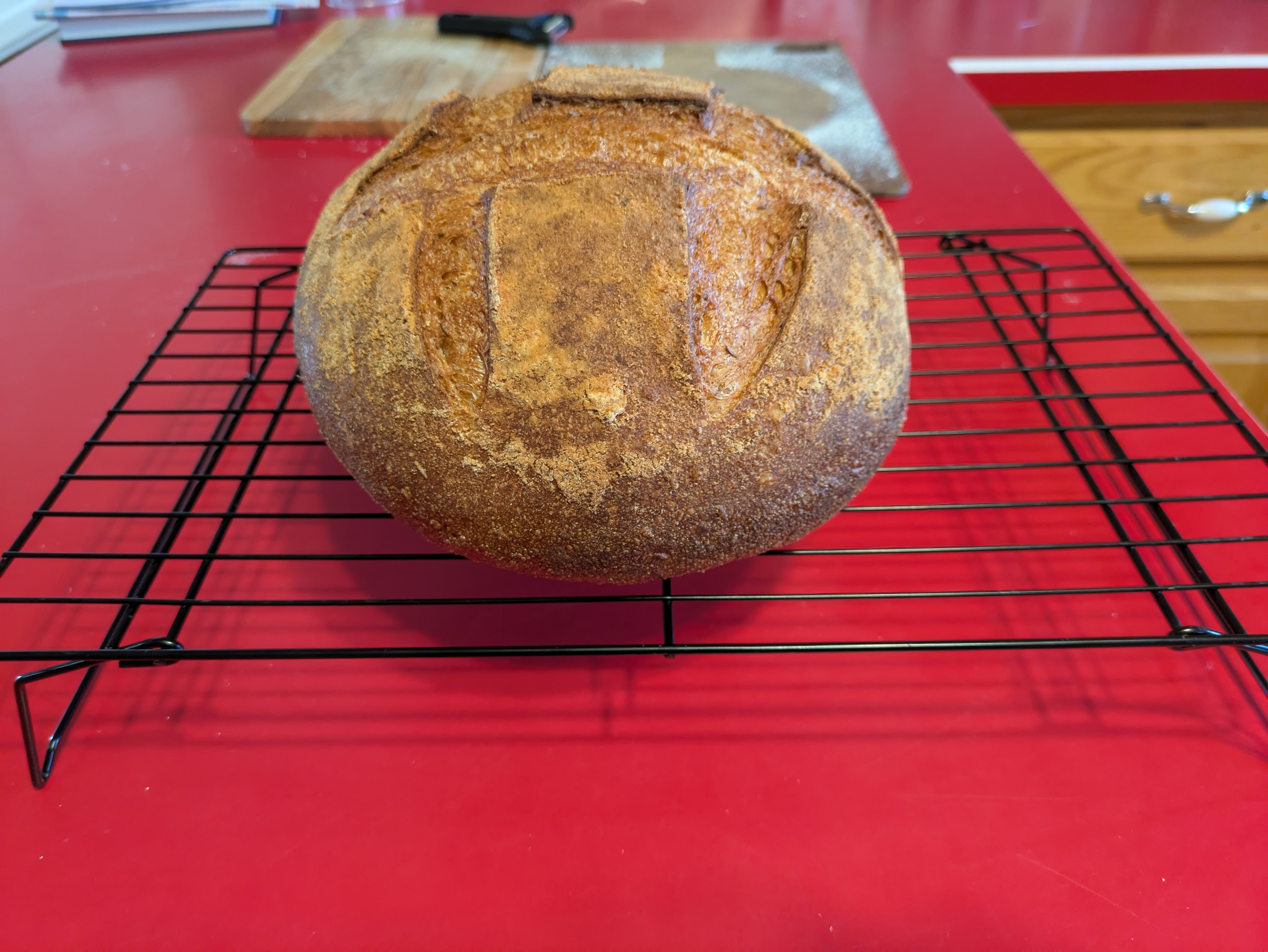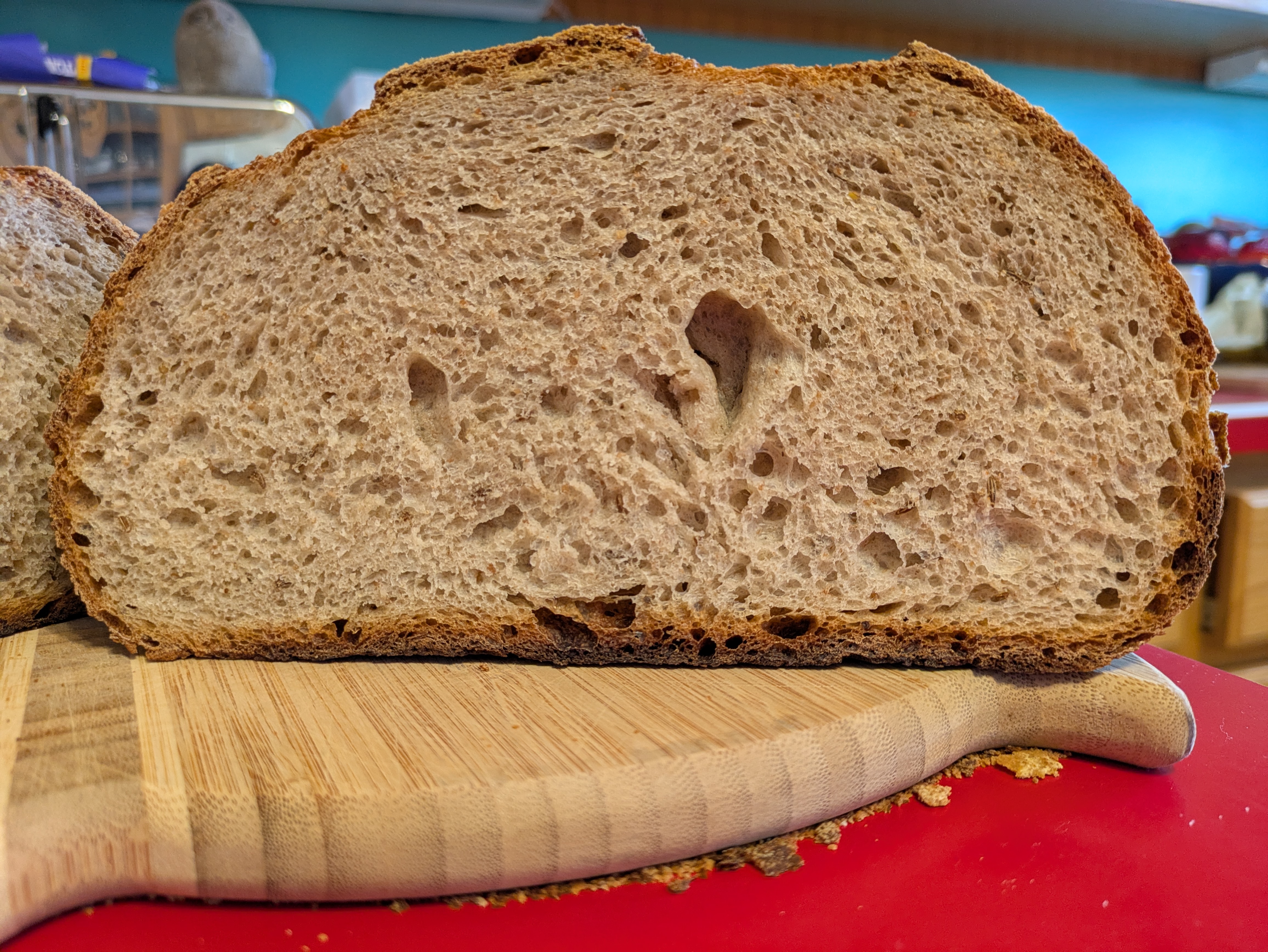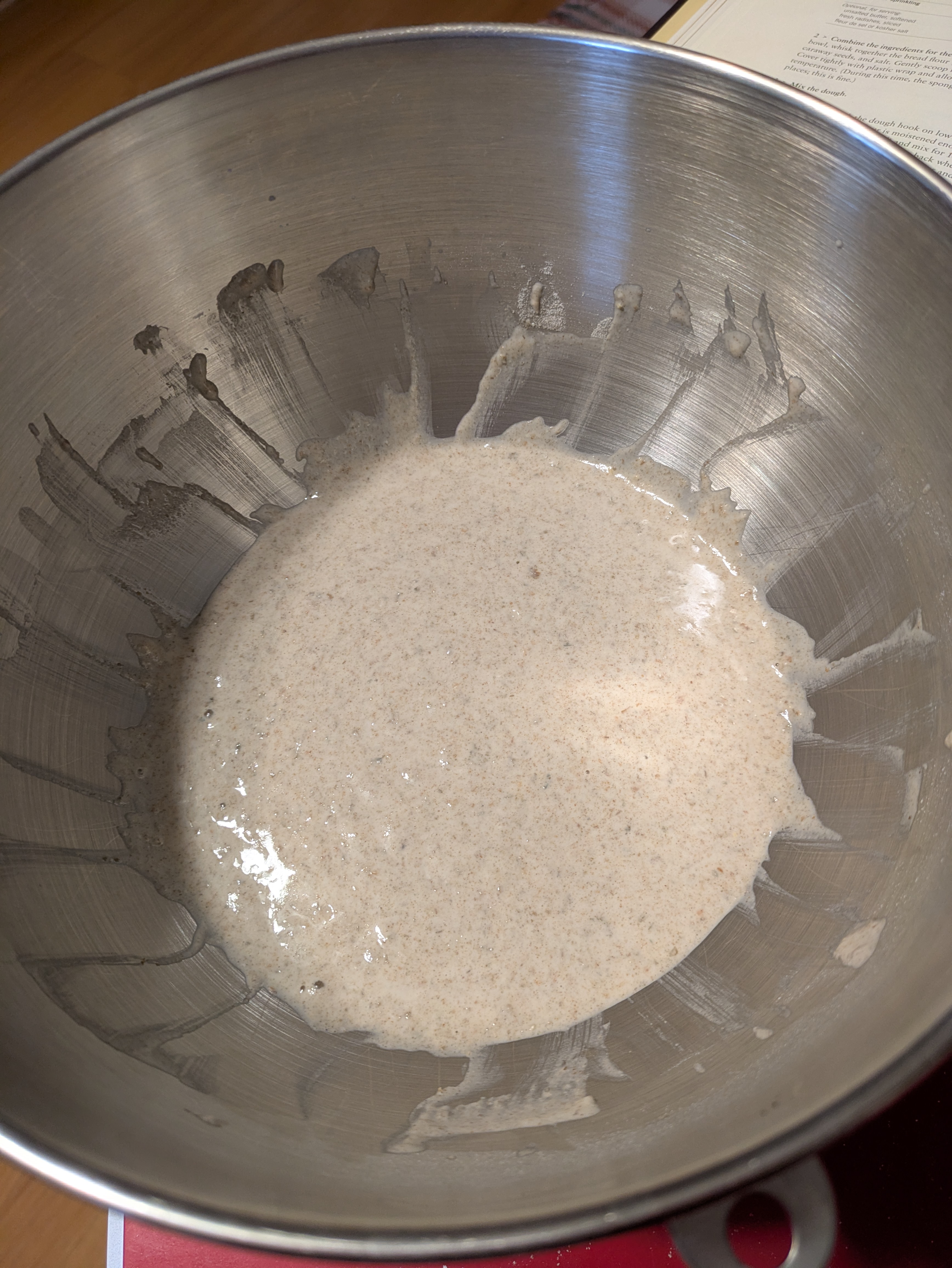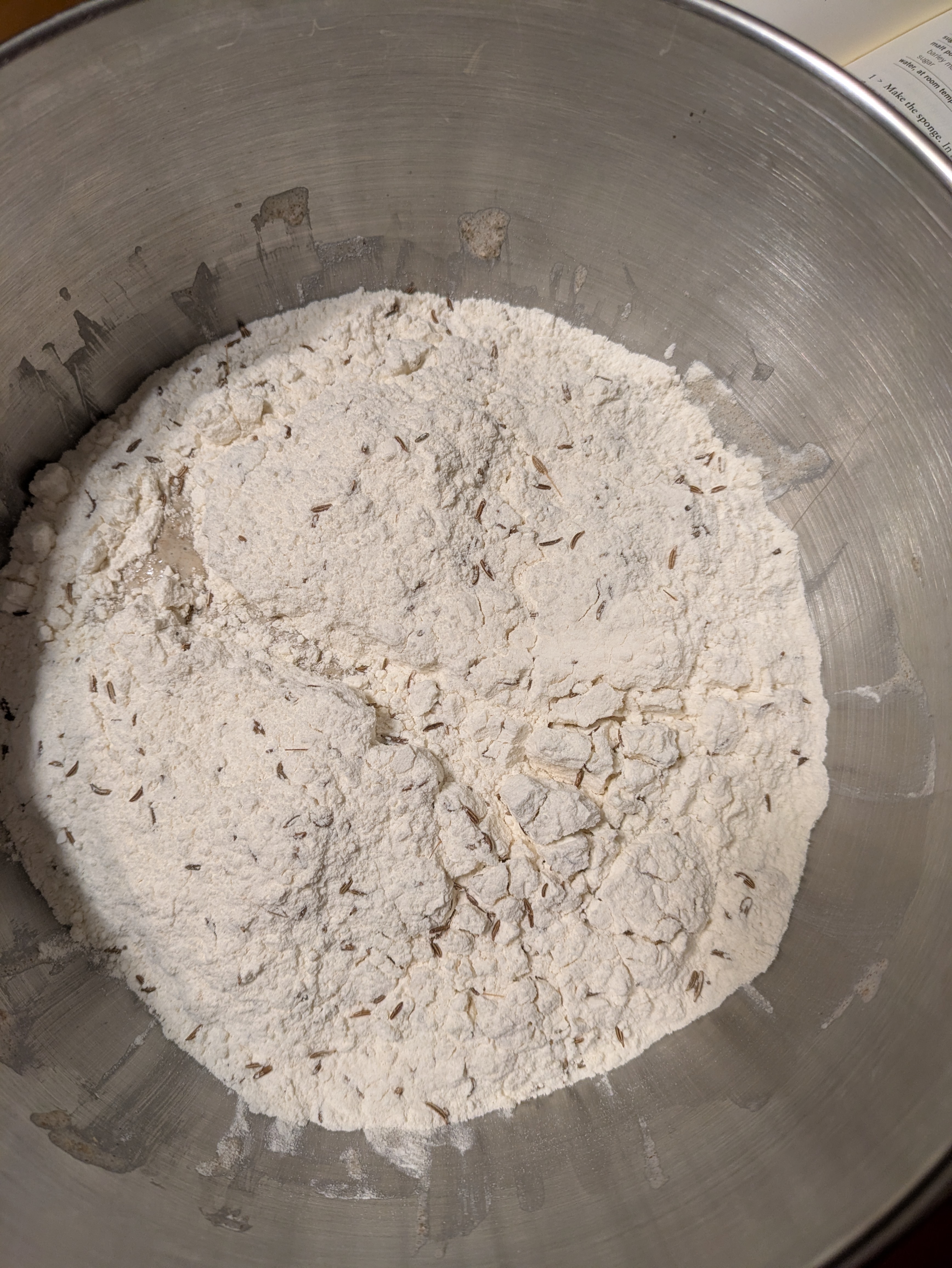Baking the Bread Bible #3: Levy's Real Jewish Rye Bread (and Notes on the Nature of Breadtime)

Baked Monday, 2025-02-03.

Lovers in a Dangerous Breadtime
This bread had an 8 or 9 hour preferment (all but an hour of that in the fridge), 3 hours or so bulk fermentation, and an overnight proof in the fridge of about 9 or 10 hours.
Virtually none of that was planned.
Bread does not confine itself to our understanding of time. It bends time, extends time, pokes holes in your teeny tiny human time plans because time means nothing to it even as time means everything to it. Thankfully, we can use bread’s time-bending nature to our advantage, once we learn a bit of breadtime logic.
RLB’s approach generally gives two areas you can bend time:
She uses a sponge preferment for a lot of her stuff, for which she often gives two ranges of times: either mix the sponge and let it sit on the counter for 1 to 4 hours, or throw it in the fridge after an hour on the counter, where it can do its prefermentation for up to 24 hours. This second option is usually listed in the “Ultimate Full Flavor Variation” section at the end of a recipe, where it applies.
Early in the book, on p. 78, she notes that most breads will take a cold proof in the refrigerator. She also discusses, near that same section, possibilities for bulk fermentation in the refrigerator. My understanding is it is best to opt for only one of these options, not both, and I generally opt for the cold proof.
So in this case, I mixed the sponge around 8:30 and planned for a longer preferment in the fridge, because we were going to be gone most of the day. When I got back, I mixed the dough and commenced bulk fermentation, only to realize she advised a much longer bulk fermentation than I expected, about 2 hours and 45 minutes.
Instead of trying to get it baked that evening, then, I took it through bulk fermentation and shaping, threw it in a banneton, let it sit on the counter for about 30 minutes, at which point I slid the basket into the fridge with a linen draped over it.
Because breadtime can seem fickle and unbearably long, it can be seem difficult to fit low-yeast loaves into your schedule. But if you learn the ways of breadtime, you can use it to your advantage. A cold preferment and a cold proof give you a lot of room to maneuver around your bread, and since more time generally means more flavor, it’s actually ideal to take advantage of these opportunities for longer rests.
The Sponge

A quick note about that sponge.
RLB doesn’t just have you make a sponge and let it sit. Rather, you make the sponge, mix most of the ingredients for the remaining dough, and then lightly pour the dry ingredients on top of the sponge. Initially, it covers the sponge, like a blanket of flour; after some time, the sponge gets more active and bubbles up through the flour blanket.

It’s quite fun to watch, and I do think it can make a dramatic difference in flavor. I generally do this in the mixing bowl itself, which saves a dish or two.
The Results
Everything else aside, this is just a delicious loaf. This is not a new bake for me but it has been a bit since I made this, and it’s a really exceptional bread: the interior is light and almost buttery in flavor and feel; the crust is crisp and defined but very easy to cut through and eat.
This was made with about a 50/50 mix of a dark rye and pumpernickel. I might make this again soon and up the total amount of rye just a touch, but keep that proportion of the types of rye the same. I think it really works here.